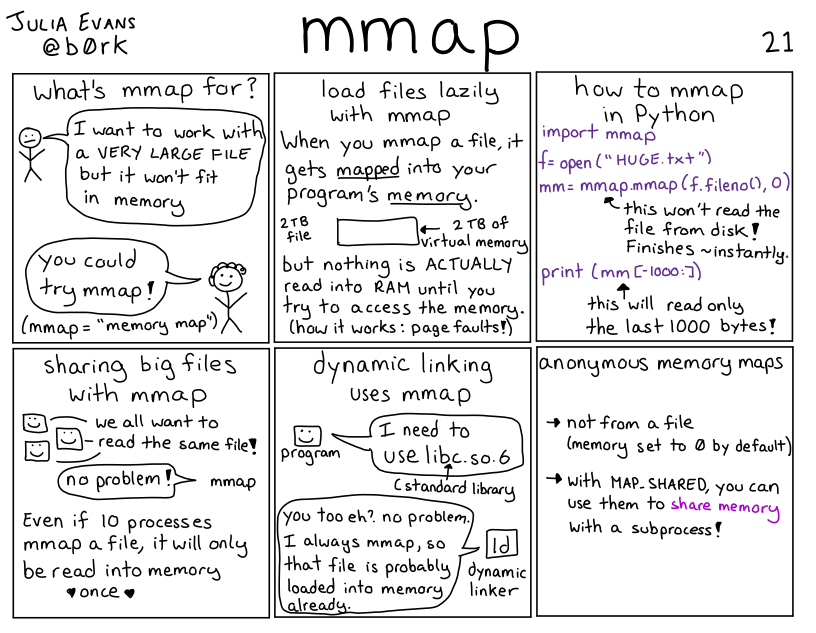
Here's a preview from my zine, Bite Size Linux!! If you want to see more comics like this, sign up for my saturday comics newsletter or browse more comics!
 browse more comics!
get the zine!
browse more comics!
get the zine!
read the transcript!
what’s mmap for?
person 1: I want to work with a VERY LARGE FILE but it won’t fit in memory
person 2: You could try mmap!
(mmap = “memory map”)
load files lazily with mmap
When you mmap a file, it gets mapped into your program’s memory.
2 TB file: 2 TB of virtual memory
but nothing is ACTUALLY read into RAM until you try to access the memory.
(how it works: page faults!)
how to mmap in Python
import mmap f= open("HUGE.txt")
mm= mmap.mmap (f. filenol), 0)
(this won’t read the file from disk! Finishes ~instantly.)
print (mm C-1000:7)
this will read only the last 1000 bytes!
sharing big files with mmap
three processes: we all want to read the same file!
mmap: no problem!
Even if 10 processes mmap a file, it will only. be read into memory once
dynamic linking uses mmap
program: I need to use libc.so.6 (standard library)
ld dynamic linker: you too eh? no problem. I always mmap, so that file is probably loaded into memory already.
anonymous memory maps
- not from a file (memory set to by default)
- with
MAP.SHARED, you can use them to share memory with a subprocess!
Saturday Morning Comics!
Want another comic like this in your email every Saturday? Sign up here!
